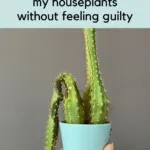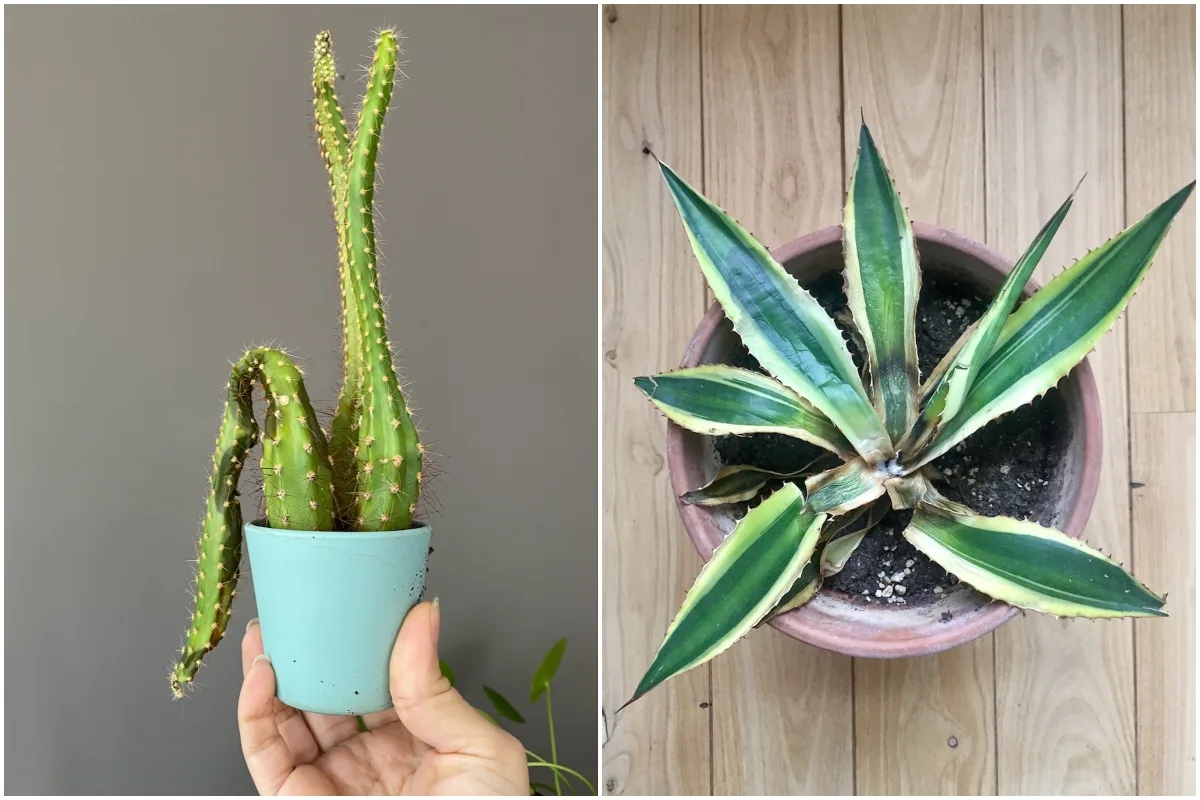
I write a lot about saving plants, fixing plants and solving plant problems.
I love plants and hate waste, so whenever one of my green babes is going through a hard time, I try all the tricks in the book (in all the plant books, actually) to get it back on its feet. Most of the time, I pull it off. Every now and then, it’s not as much back on its feet as it is limping along.
But I have to acknowledge that sometimes, the answer to the question Should I throw away this houseplant? is YES! It’s a reluctant “yes,” but a “yes” nonetheless.
And that’s ok!
The guilt is real.
I used to feel so much guilt over throwing away a houseplant. And it was sometimes peppered with a bit of shame because I was supposed to be the “plant expert” (whatever that means) that friends and family turned to for advice.
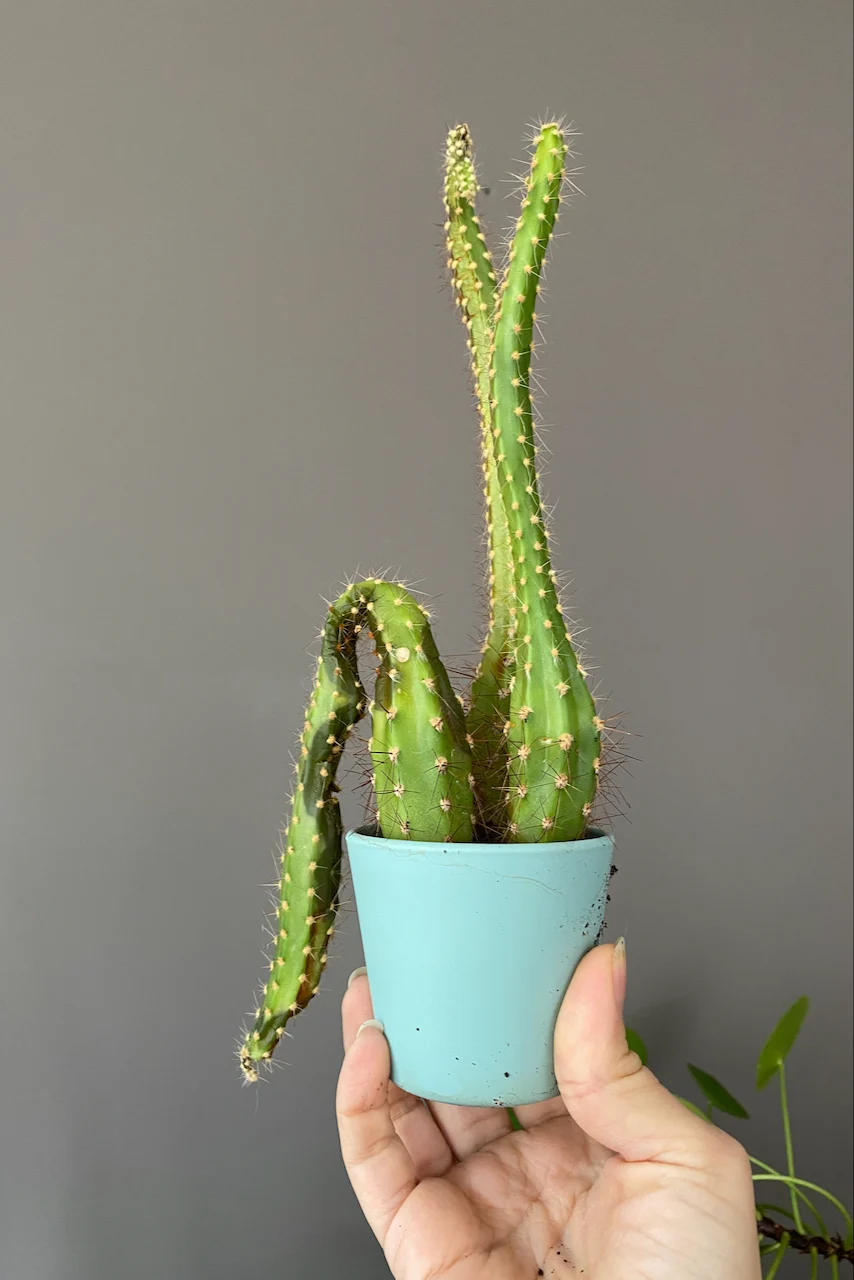
However, at some point during my 15+ years of keeping houseplants, I started to internalize this mindset: if any part of a hobby that is supposed to bring you joy ends up making you feel hopeless and overwhelmed, then the stress is simply not worth it.
So over the years, I let go of some of the houseplants that were either very clearly dying or diseased beyond redemption. Or beyond my patience. Whichever came first.
It’s ok to throw away houseplants.
In fact, I give you permission to chuck that problem plant in the bin. Not that you need my permission. But maybe you need a sign that it’s ok to get rid of houseplants that you can’t save. And as further encouragement, let me tell you about a few plants that I decided to throw away. There may or may not have been some apologies beforehand.
1. The arrowhead that struggled for a year.
Cohabitation: Five and a half years (four of them happy).
Let me start with the one that broke my heart the most: the gorgeously lush arrowhead plant (Syngonium podophyllum). I bought it as a baby plant for my birthday because I kept seeing it on the list of plants that are easy to take care of. And it was easy. For about four years, it kept getting bigger and lusher.
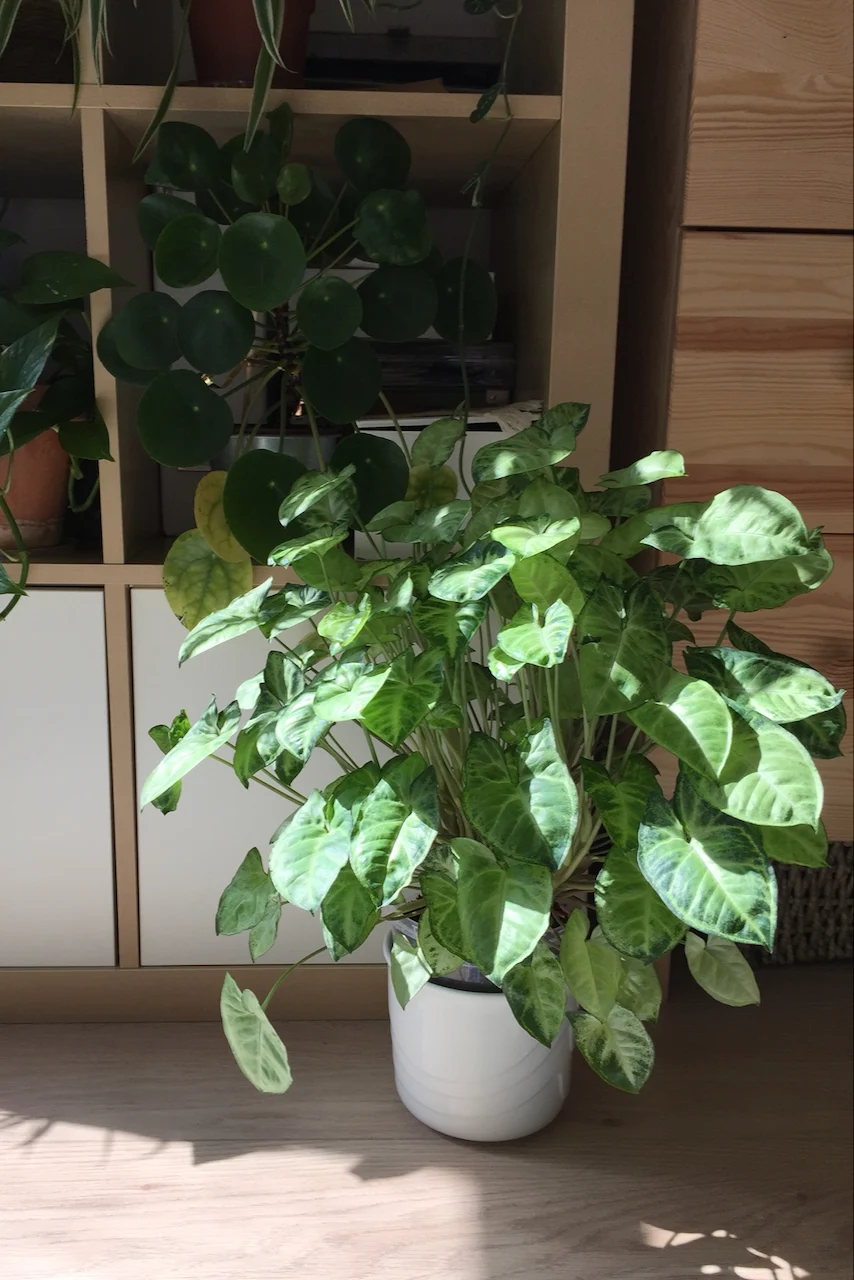
To keep it manageable in a small apartment, I took a few batches of cuttings. Since arrowhead plants are very easy to propagate, I gave all the baby plants away thinking that I could always propagate some more.
After all, I had a healthy chunky parent-plant at home. Until I didn’t.
The arrowhead vine was one of the first plants to succumb to what’s now known as “The Great Thrip Infestation” in our house. The infestation started gradually. So gradually, in fact, that I completely ignored it for a couple of months. Then it spread like wildfire from one plant to another in the same location. Then it started spreading from room to room.
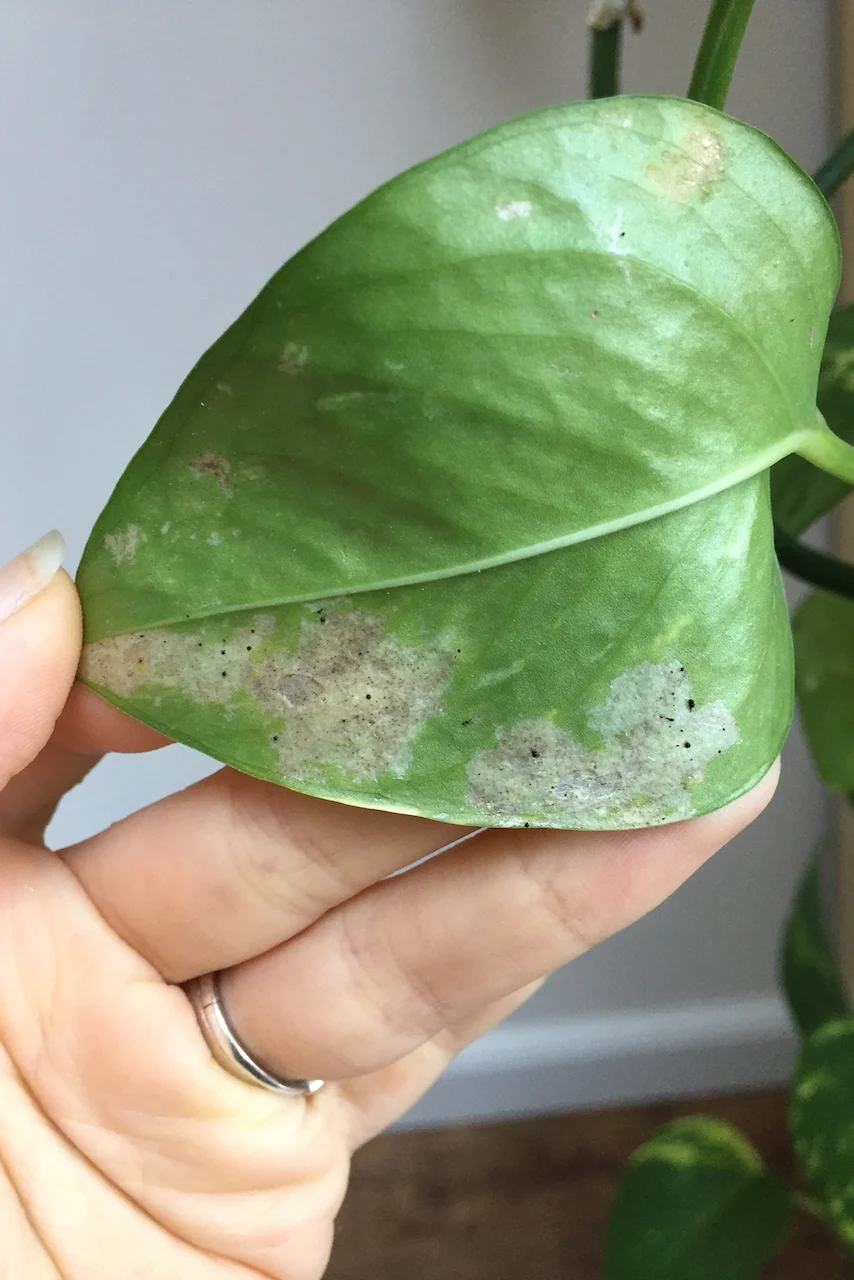
Some plants were not touched by thrips at all. Some were affected, but they recovered quickly as soon as I started treatment. Unfortunately, the arrowhead plant wasn’t in any of these categories. So after five and a half years of mostly peaceful cohabitation, it ended its journey at the bottom of the trash can. By that time, it looked like this.
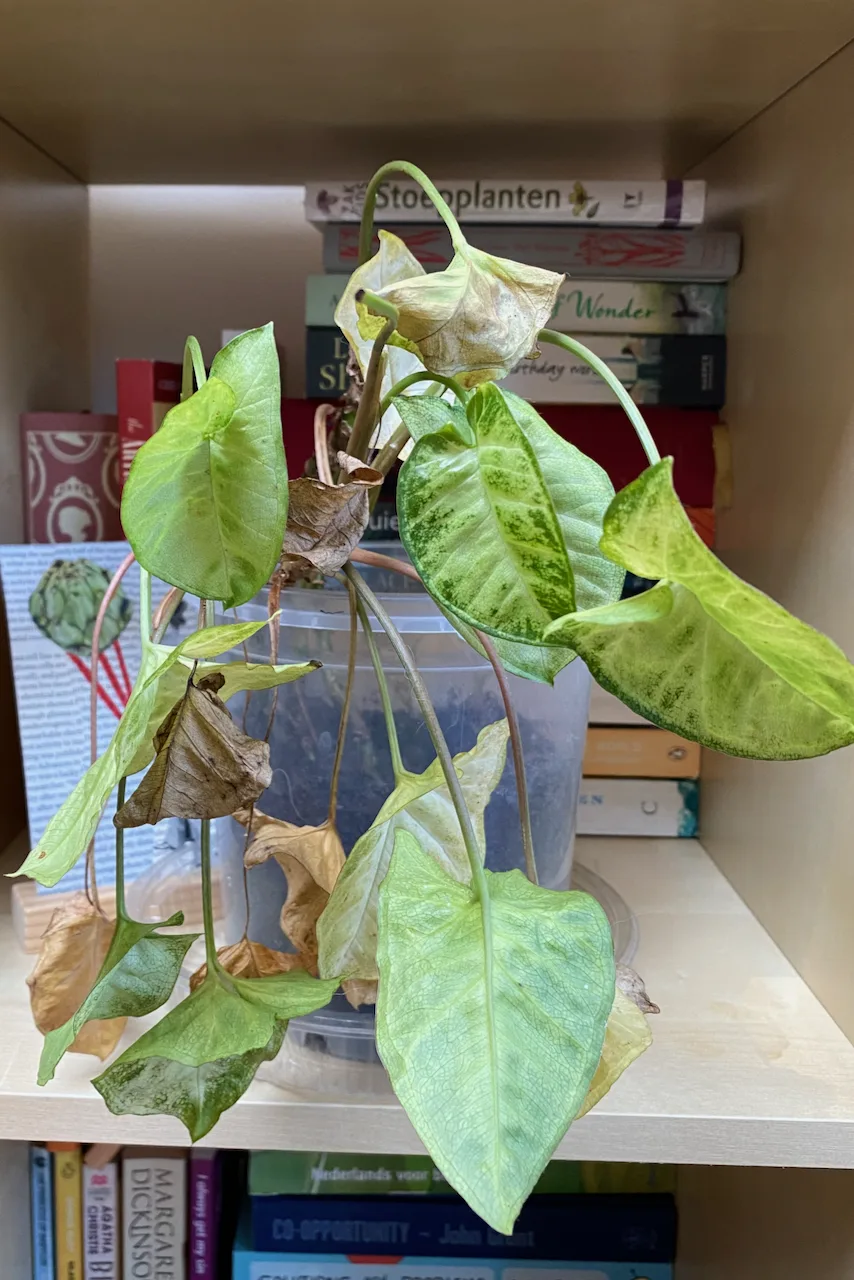
Could I have saved this arrowhead plant?
Don’t think I didn’t try to save my arrowhead plant. Oh, I did. For over a year, I applied neem oil solutions, meticulously cleaning the leaf by leaf. Sometimes, I would do this every weekend, thinking I could get ahead of the thrips.
I removed the sick parts as soon as I spotted them. The arrowhead would recover for a few weeks, then start losing leaves, wilting and generally feeling sorry for itself all over again.
I even took cuttings and placed them in different rooms of the house after I made absolutely sure they were healthy. They were not. In the end, I decided that I had spent enough time and resources trying to nurse this plant back to health. Even though it was growing new leaves, I allowed myself to throw away this houseplant.
Would I buy a Syngonium again?
I’m not sure. I think I’d like to get a cutting from someone else to see if we get along this time.
2. The air plant that simply shriveled up.
Cohabitation: Two years.
Killing this air plant was not as much a heartbreak as a major disappointment. Mostly because I didn’t learn any lesson from its demise. I have no idea why it just shriveled up and died, but let’s just say it happened quickly.
I thought I had a good routine for its care. Also, I soaked the plant regularly – about once every one or two weeks, depending on the season and other environmental factors. And it had plenty of bright indirect light.
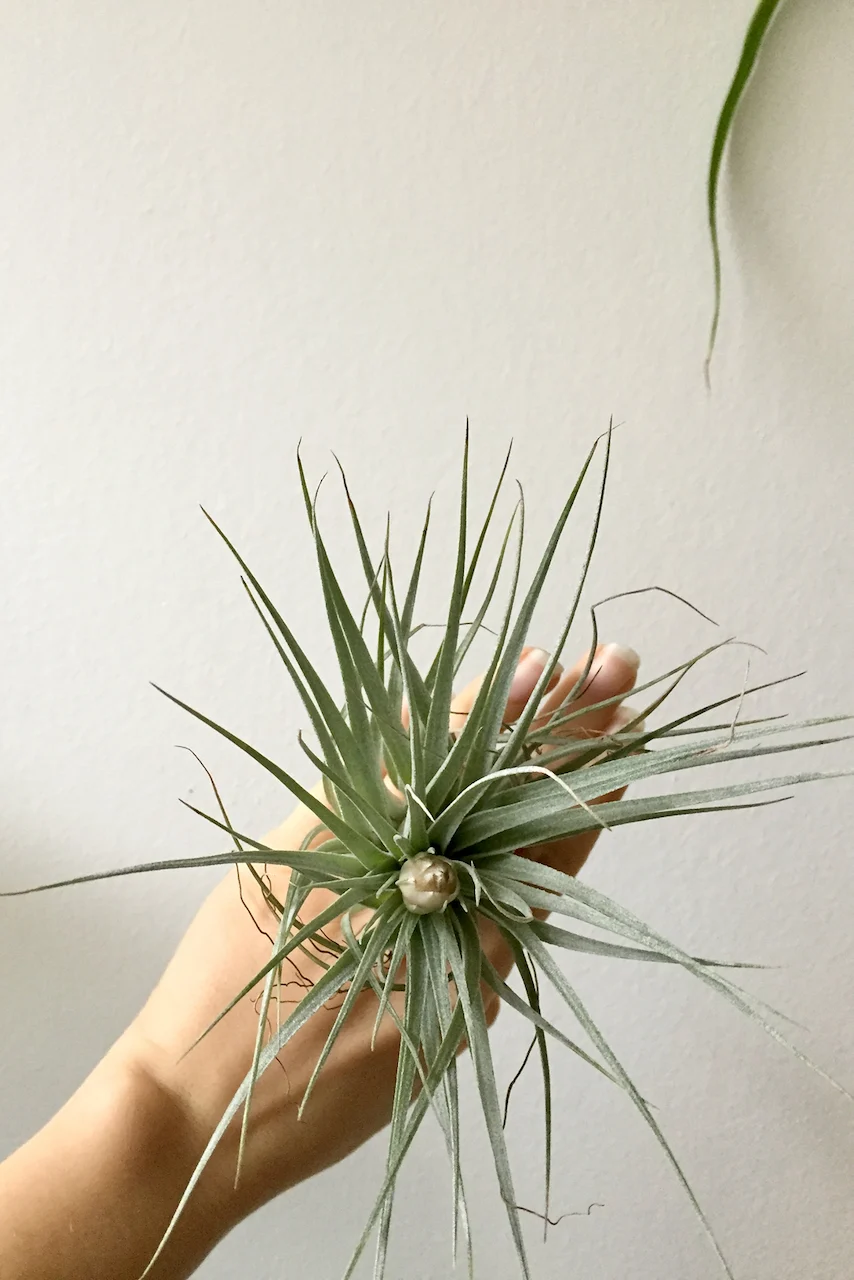
The air plant flowered and at some point even produced a baby of its own. Life was good. That is, until the air plant started looking a bit crispy, starting from the outer leaves. It went downhill in a matter of weeks. Into the compost bin it went.
Could I have saved this air plant?
I still don’t know why it died so suddenly. I suspect that it wasn’t getting enough humidity in between soaking sessions.
But then again, my colleague Meredith tells us that air plants only live between two and five years, so maybe it was its time to cross the rainbow bridge.
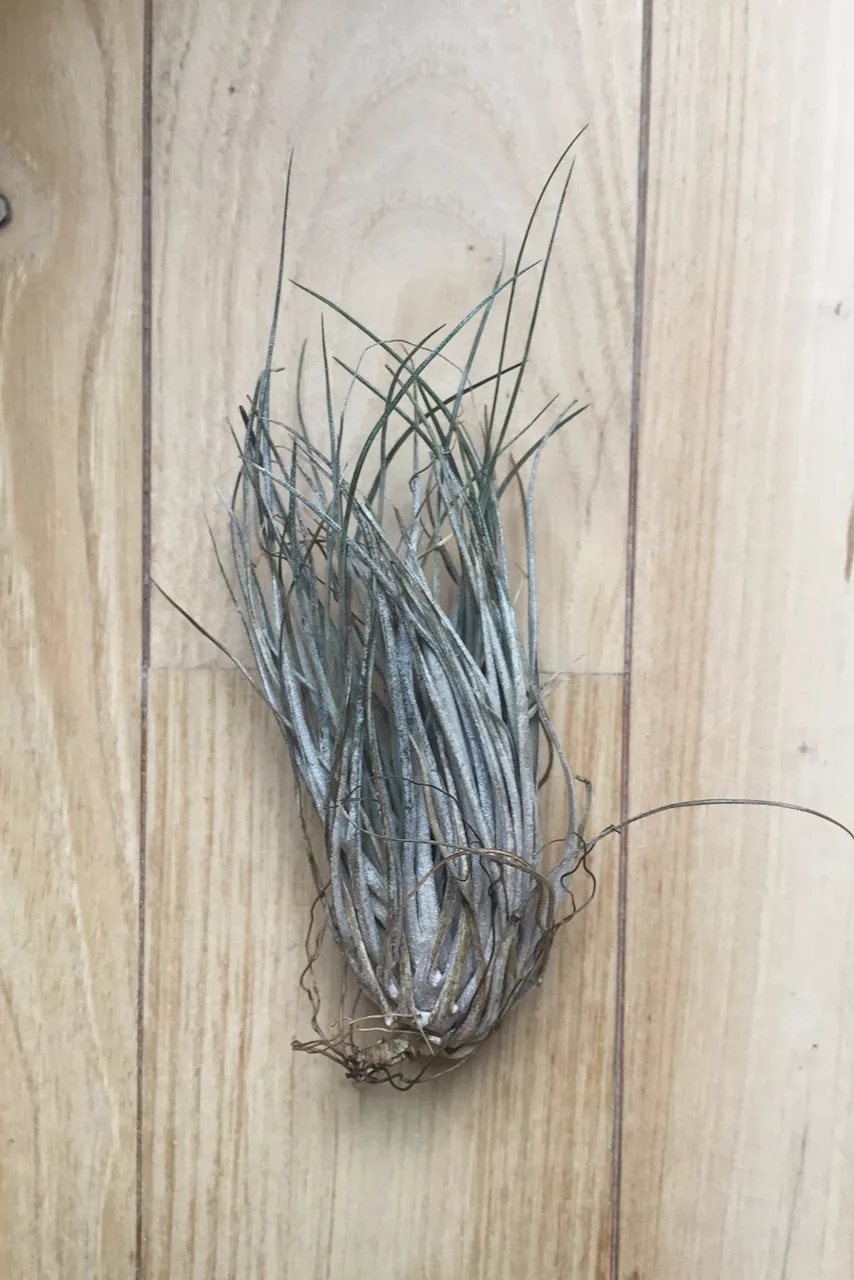
Would I get another air plant?
Oh, yes! I’m stubborn like that. Plus, I’ve already made air plant macrame hangers and copper supports. It would be nice to get a chance to use them again. However, I would place my next air plant in a more humid environment, now that I live in a house with large windows in the bathroom.
3. The orchid that shed all its leaves.
Cohabitation: Two months.
I used to be very smug about my orchid skills.
Case in point: I would tell anyone who would listen about the orchid skeleton that I miraculously brought back to life and bloom. It had been abandoned on top of the fridge in the windowless kitchenette of the office I used to work in. No water. Zero light. It took a couple of months for me to muster up the courage to take it home. (Nobody claimed it. I asked.)
This shell of an orchid ended up recovering and blooming for years. I gifted it to my mother-in-law before our big house move.
She, the thoughtful person that she is, decided to give me a brand new orchid as a housewarming present a few years later. This orchid had other plans. When we got it delivered by the florist, it was a wonderful cascade of speckled pink flowers. Less than two months later, it looked like this.

I have no idea what happened, but I suspect it suffered some sort of shock at the sight of all the unpacking we still needed to do. In all honesty, I think it was the shock of the transfer from greenhouse conditions to our home. Or at least, this is what I want to believe happened.
I have no other explanation. Tracey wrote an excellent guide on mistakes to avoid when you’re growing orchids. I went through it point by point and declared myself innocent.
Could I have saved this orchid?
Definitely not. Every time I glanced in its general direction, it dropped another leaf. So I think it had decided to kick the bucket long before I decided to throw it away. I have successfully grown and saved other orchids since then, so I’m not too bummed out about this one.
4. The agave that rotted in the middle.
Cohabitation: Seven months (from August until the following February)
I bought this agave from a botanical garden plant sale one hot August afternoon. It survived the ride home. It even survived the summer. And the fall, for the most part. By the following February, it just succumbed to crown rot.
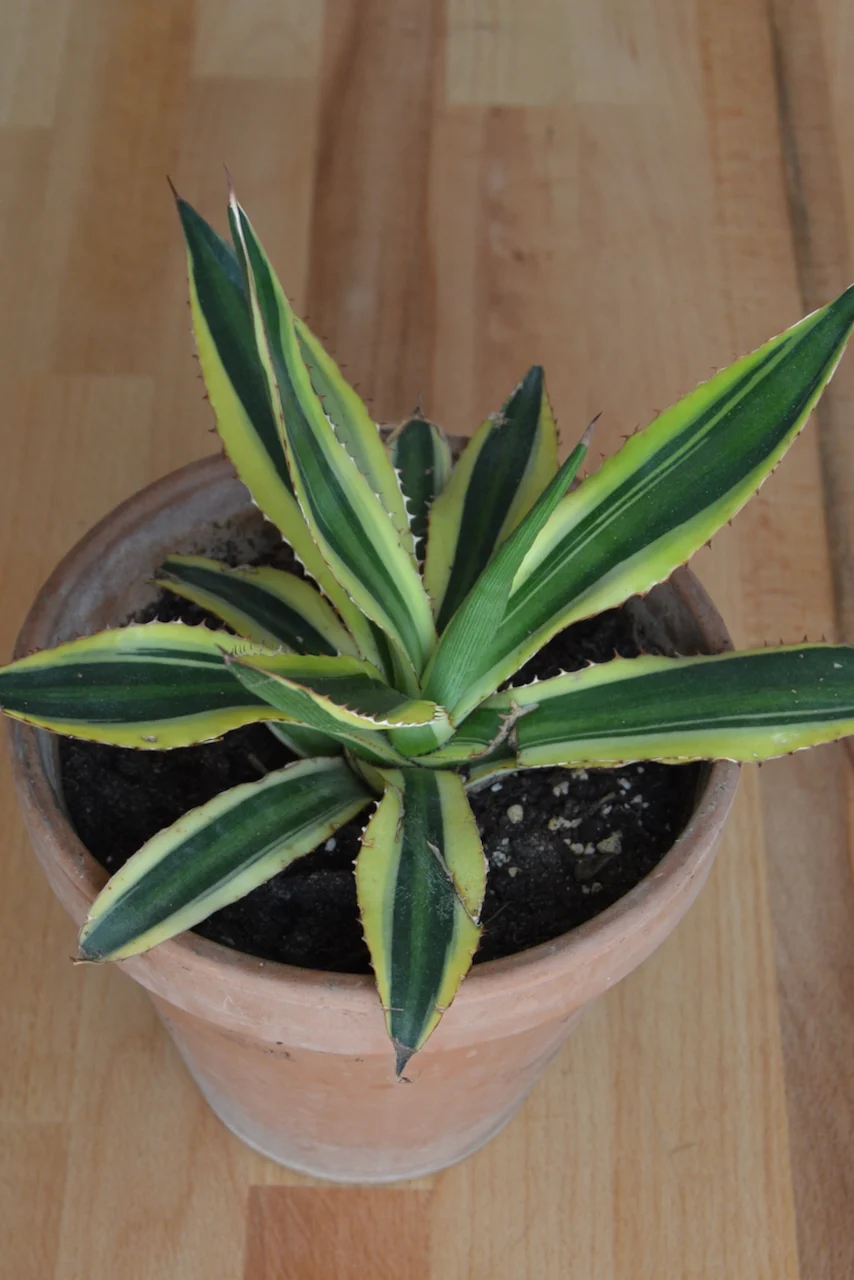
My fault! I think I overwatered this one. By the way, I know better than to water it in the middle, so I think the rot started below ground and spread to the crown. Game over for this baby!
In hindsight, I also may have used the wrong potting mix. And because It looked dry on the surface, I felt the need to water it more often than I should have. Upon further (belated) inspection, the soil was retaining a lot of moisture at the root level. In spite of the fact that the terracotta should have allowed more evaporation, especially during the dry winter months.
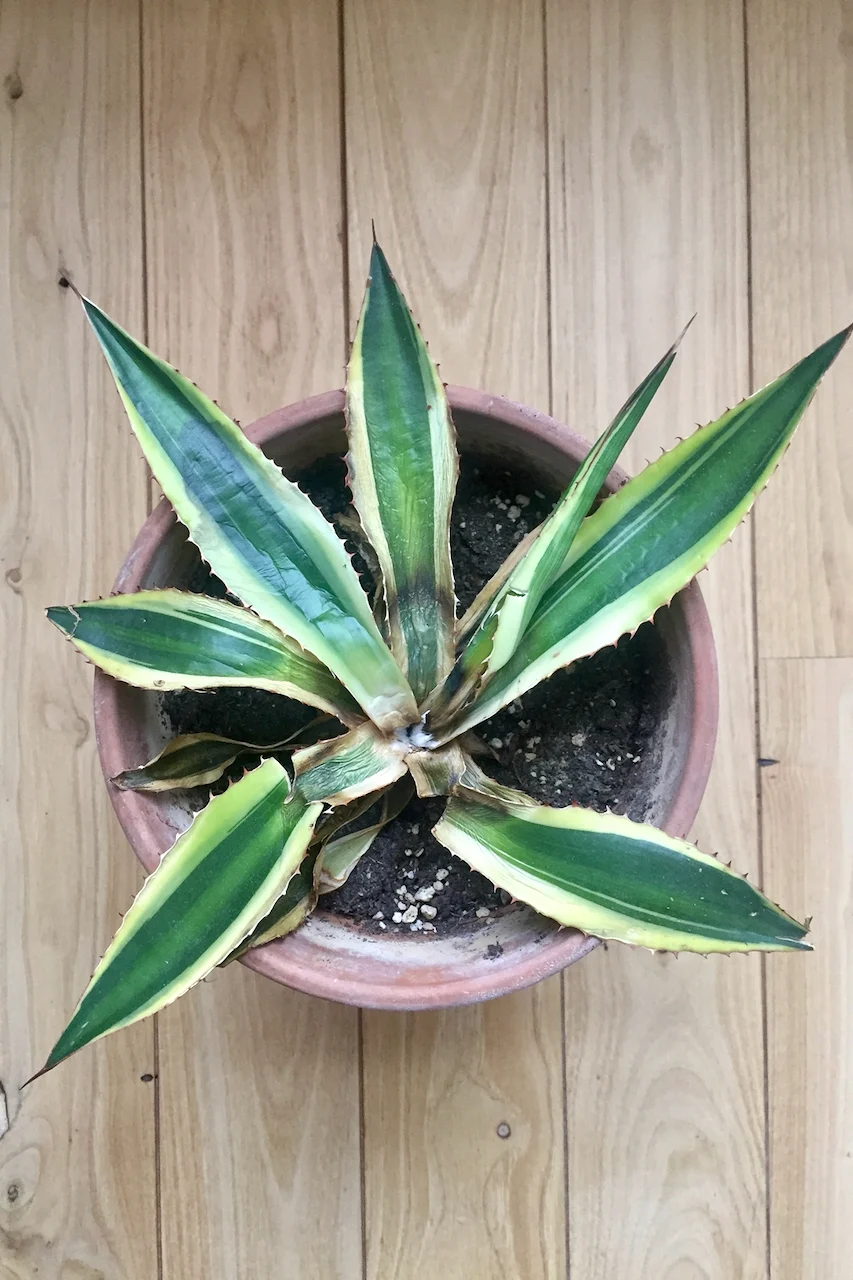
Could I have saved this agave?
I probably could have saved it, if only I had caught it in time. Here’s what I would have done: I would have taken it out of the pot, inspected the roots and noticed that the soil was retaining too much moisture. I should have paid better attention.
Oh well, next time! I threw away this houseplant and called it a ‘lesson learned’ moment.
5. The tradescantia that just tumbled downhill (metaphorically)
Cohabitation: Five or six years (depending on what you count as “alive”)
Tradescantia is such a fan favorite on Rural Sprout. Our readers love this plant and often share their own wandering dudes in the comments on our Facebook page.
I love it too. I really really do!
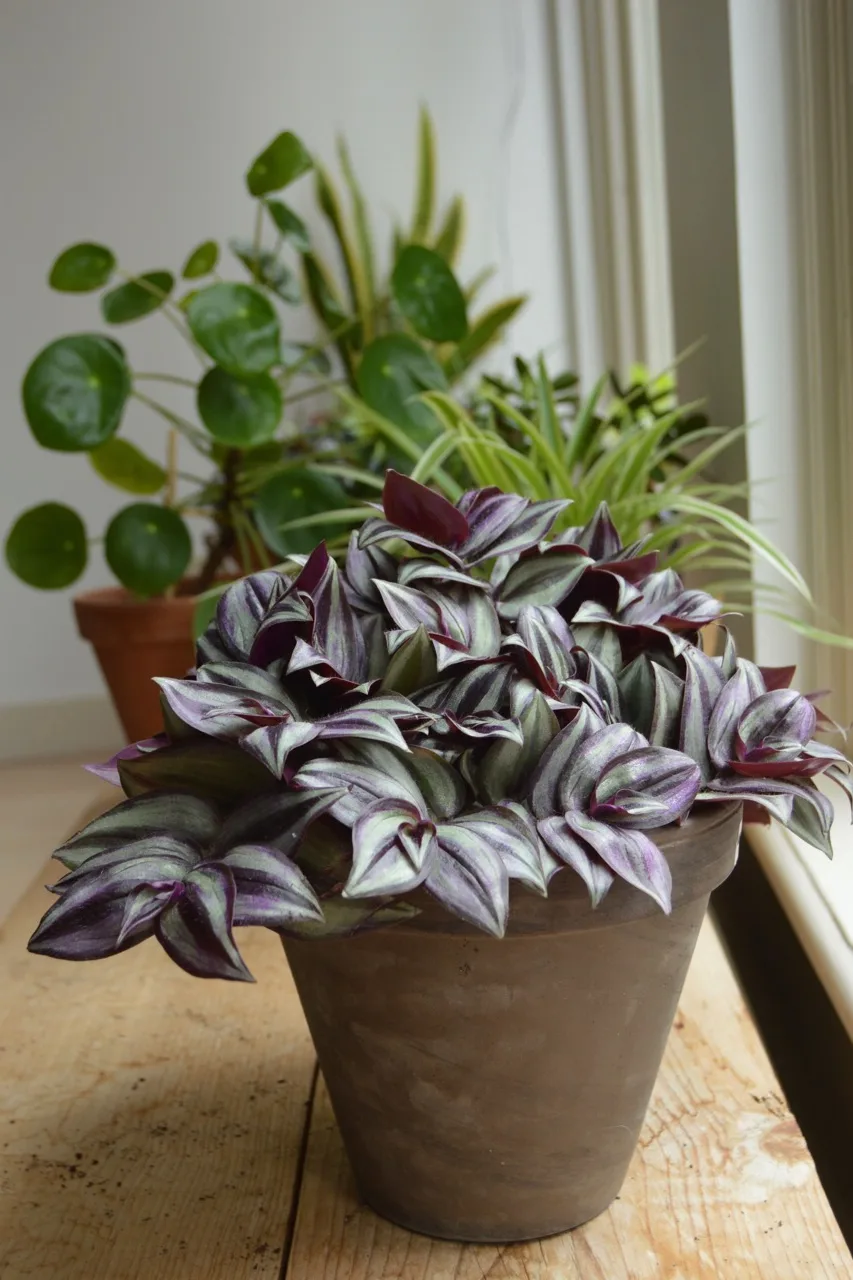
And it loved me back for about five years. It started as a compact dainty lady and eventually turned into a vertical room divider. It was a happy plant for years.
Over time, the hanging stems started to lose their bottom (or top, depending on how you look at it) leaves. And the dreaded thrips – the same ones that killed the arrowhead plant – started moving in. This all resulted in a bald plant that looked more straggly than sassy.
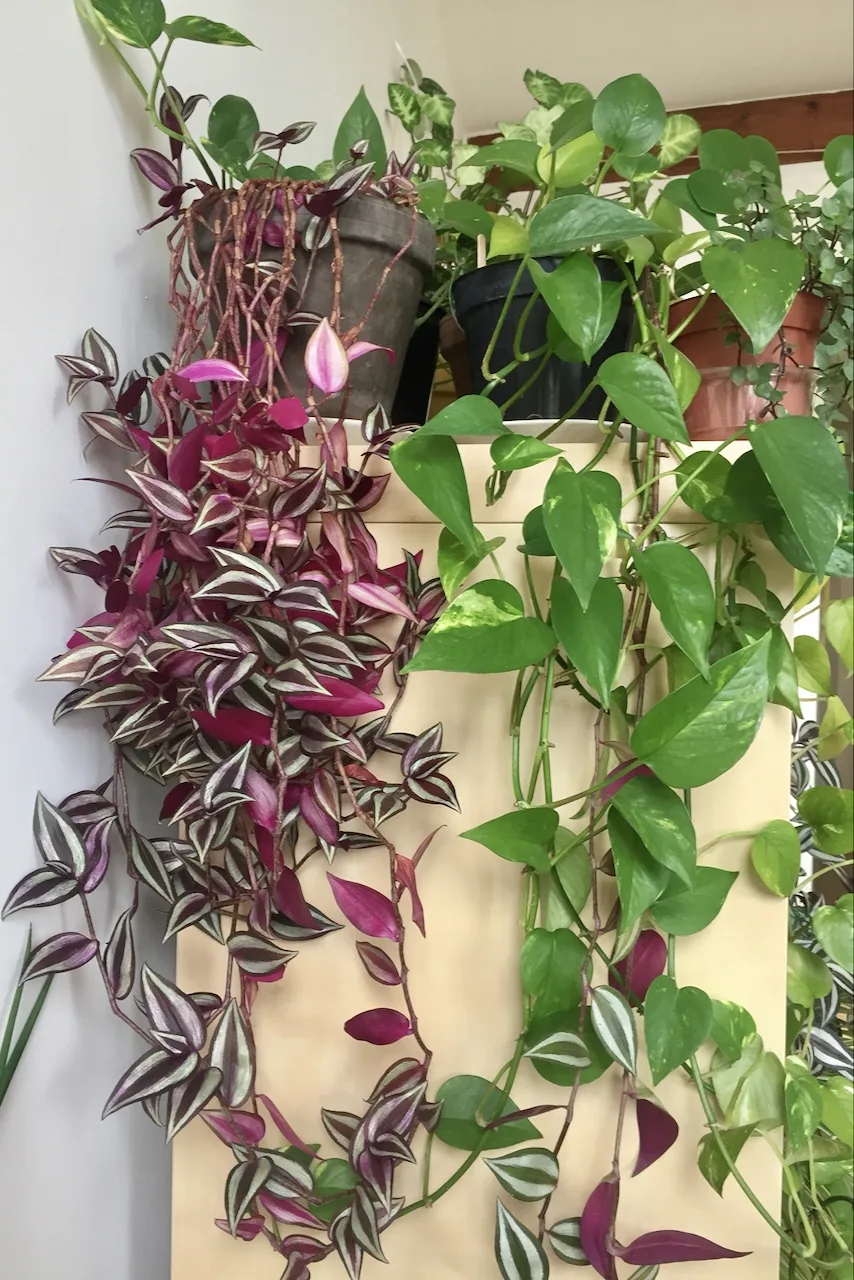
Could I have saved this tradescantia?
Believe me, I tried.
For well over a year, I pruned and rooted and re-potted the babies. I applied neem oil. Then I repotted the mother-plant. I took cuttings and started again. Anything to get it back in better shape.
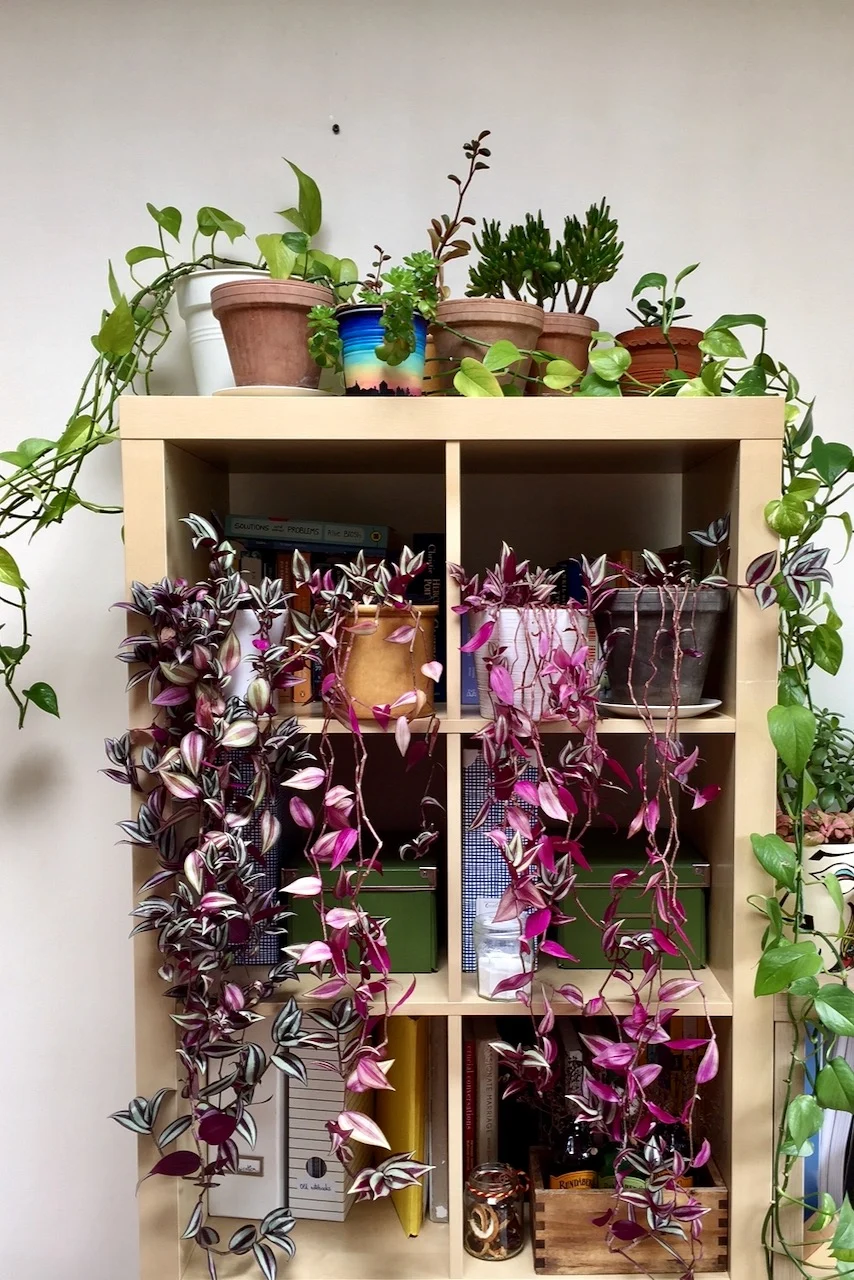
And every time I thought I was making progress, a setback was just around the corner. In the end, I decided that I didn’t want to spend what energy I had left on rehabbing this tradescantia any longer.
I had beat myself up enough, so I decided to let it fend for itself outdoors. It survived for a couple of months in the garden and spread its fingers all over the ground. But it died during a frost spell in the winter and never came back.
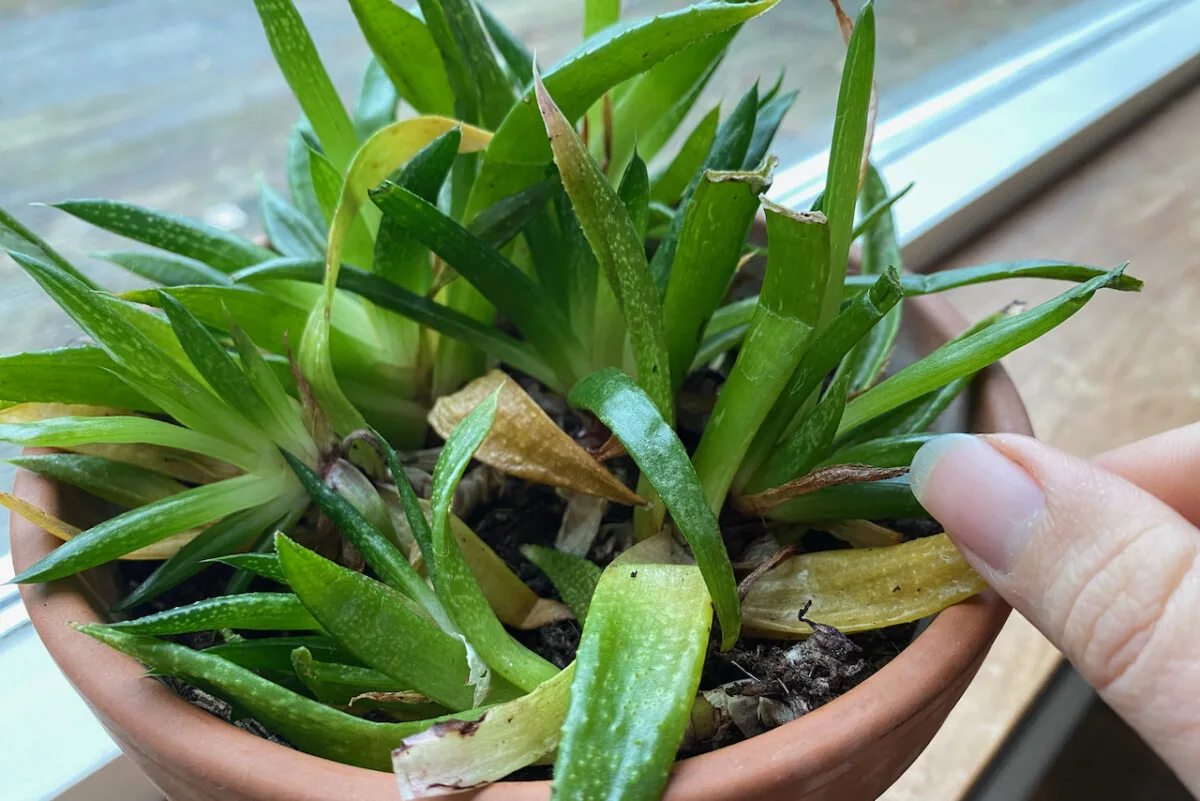
It’s ok to throw away a struggling houseplant.
It may be an unpopular opinion, but I really believe that it’s ok to let go of a plant that’s struggling and find a better fit. This letting go might mean putting it out on the curb with a FREE sign, offering it for free in your Nextdoor group (mention what’s wrong with the plants so people know if it’s sick, please) or simply throwing it away. You’ll feel better not having to look at a sick plant.

Get the famous Rural Sprout newsletter delivered to your inbox.
Including Sunday musings from our editor, Tracey, as well as “What’s Up Wednesday” our roundup of what’s in season and new article updates and alerts.


